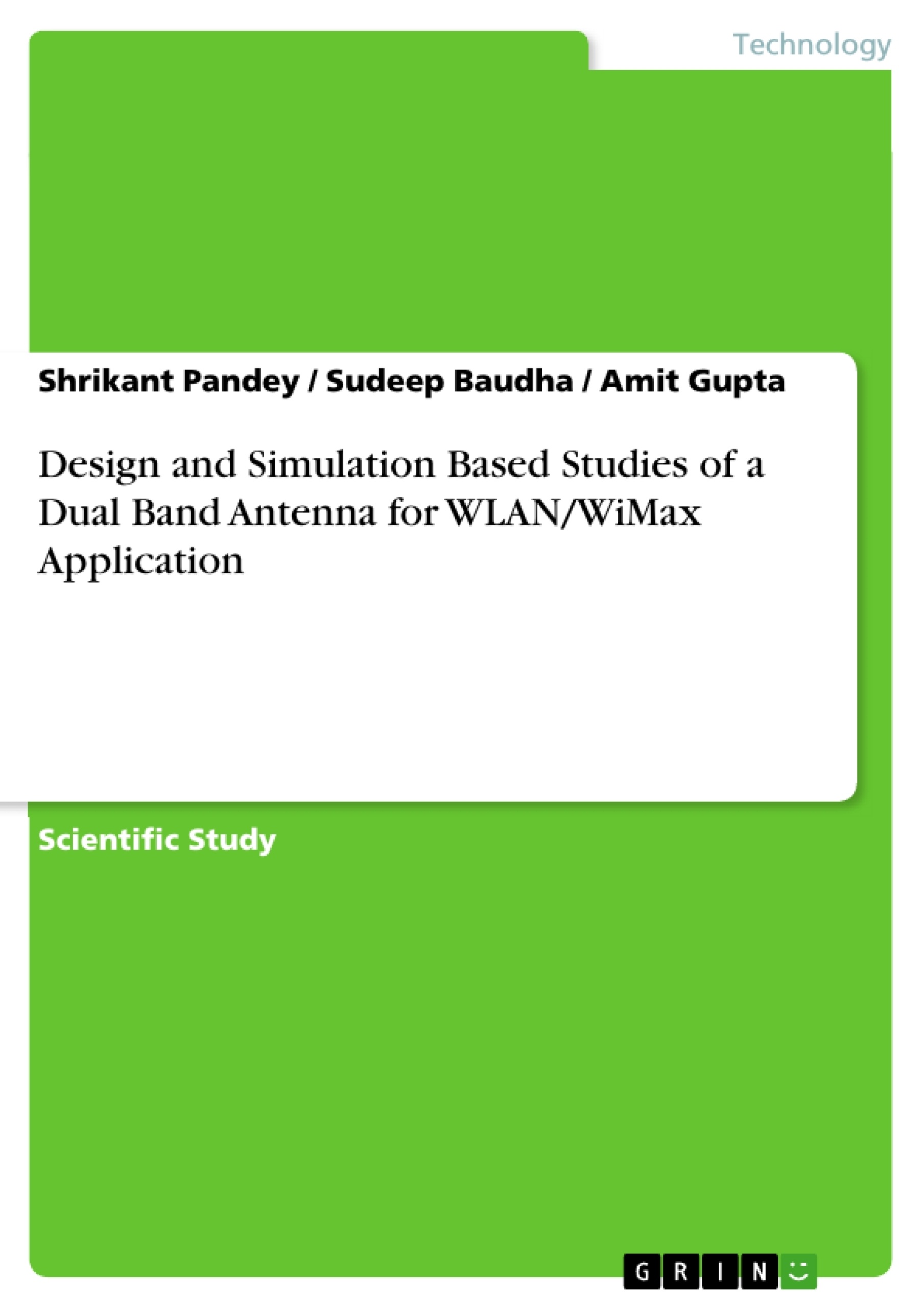Two different designs of a dual band patch antenna have been investigated in this paper. By using u-slot patch geometry dual band operation has been obtained. The patch antenna is simulated by Ansoft HFSS software which is finite element method based simulator. After the antenna performance characteristics such as, input impedance, return loss, polar plot are obtained.. This observation has provided us sufficient insight to optimize the antenna parameters to meet the design requirements. The proposed designs of the antenna operate in 2.4 GHz band which is common to all two designs but the second operating band is different. By varying the slot broadness the second frequency band can be shifted IEEE802.11b (2.45 GHz) and IEEE802.11y (3.2 GHz) standards which would allow WLAN operation. This patch antenna has been intended to be used in portable devices that demand miniaturized constituent parts.
ABSTRACT
Two different designs of a dual band patch antenna have been investigated in this paper.By using u-slot patch geometry dual bandoperation has been obtained. The patch antennais simulated by Ansoft HFSS software which is finite element method based simulator. After theantenna performance characteristics such as, inputimpedance, return loss, polar plot are obtained..This observation has provided us sufficient insightto optimize the antenna parameters to meet thedesign requirements. The proposed designs ofthe antenna operate in2.4 GHz band which iscommon to all two designs but the secondoperating band is different. By varying the slotbroadness the second frequency band can beshifted IEEE802.11b (2.45GHz) andIEEE802.11y(3.2 GHz) standards which wouldallow WLAN operation. This patch antenna hasbeen intended to be used in portable devicesthat demand miniaturized constituent parts.
Keywords— Patch antenna, slot, dual band, gain, directivity.
I.INTRODUCTION
Frequently asked questions
What is the main topic of the paper?
The paper investigates two different designs of a dual-band patch antenna using a u-slot patch geometry to achieve dual-band operation. It focuses on optimizing the antenna parameters for WLAN applications and miniaturization for portable devices.
What software was used to simulate the antenna?
The patch antenna was simulated using Ansoft HFSS software, a finite element method-based simulator.
What frequency bands do the proposed antenna designs operate in?
Both antenna designs operate in the 2.4 GHz band. The second operating band is different for the two designs, and can be shifted by varying the slot broadness to meet IEEE802.11b (2.45GHz) and IEEE802.11y (3.2 GHz) standards for WLAN operation.
What are the key parameters of the antenna that were investigated?
The paper investigates key antenna performance characteristics such as input impedance, return loss, and polar plot. Gain and directivity were also improved in two designs.
What is the purpose of using a u-slot in the patch antenna design?
Using a u-slot patch geometry allows for dual-band operation of the antenna.
What are the intended applications for this patch antenna?
This patch antenna is intended for use in portable devices that require miniaturized components for WLAN applications.
What is the relationship between slot broadness and the second frequency band?
By varying the slot broadness, the second frequency band of the dual-band antenna can be shifted.
How does the paper address the issue of antenna miniaturization?
The paper aims at presenting three miniaturized dual-band u-slot patch antennas and emphasizes miniaturization. The balance between the dimension and performance of the antenna has been carefully established by parametric study (although the results of the parametric study have been omitted from the paper).
How can a basic single-band rectangular patch antenna be modified to operate in multiple bands?
A basic single-band rectangular patch antenna can be modified into a multiband antenna by introducing slots in the patch. The shapes and position of the slot play an important role in determining the resonance frequency.
What types of slot shapes are commonly used in patch antennas to achieve multiband operation?
Common slot shapes include C, E, F, H, L, V, and U.
- Quote paper
- Shrikant Pandey (Author), Sudeep Baudha (Author), Amit Gupta (Author), 2012, Design and Simulation Based Studies of a Dual Band Antenna for WLAN/WiMax Application, Munich, GRIN Verlag, https://www.grin.com/document/195403



